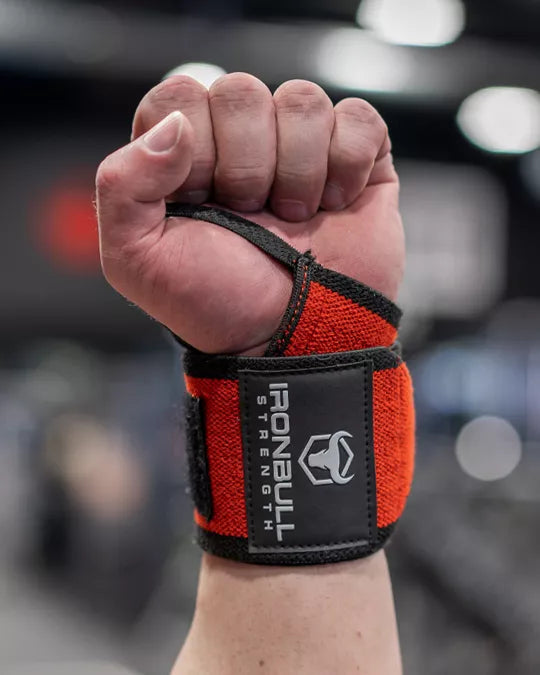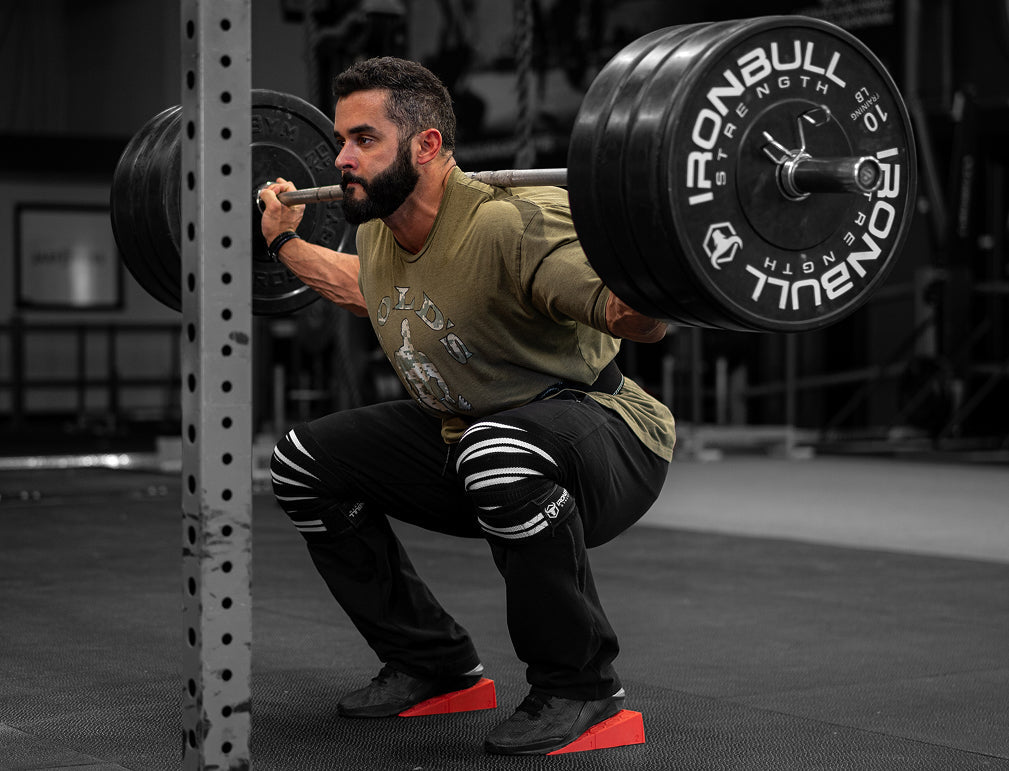What Does a Lifting Belt Do? (Ultimate Guide for Strength & Safety)

Strength training is an intense and rewarding practice, but lifting heavy weights comes with risks. Proper form, technique, and supportive equipment are essential for both safety and performance. One of the most commonly used pieces of gear in the gym is the lifting belt. Whether you're a powerlifter, weightlifter, or someone simply looking to lift heavier and safer, you may have wondered—what does a lifting belt actually do?

A weightlifting belt is often seen as a must-have for serious lifters, but there’s a lot of confusion about its role. Some believe it protects the lower back, while others think it makes lifting easier. There’s also the misconception that wearing a belt means you don’t need a strong core. In reality, a belt is a tool that helps reinforce proper technique and enhance core stability, but it does not replace good training fundamentals.
In this guide, we’ll break down exactly how a lifting belt works, the benefits it provides, when and how to use one properly, and why choosing a high-quality belt—like those from Iron Bull Strength—can make a significant difference in your training.
How a Lifting Belt Works
The primary function of a lifting belt is to increase intra-abdominal pressure, which helps stabilize the spine and reduce stress on the lower back during heavy lifts. When you wear a belt and brace your core properly, it provides a rigid surface for your abdominal muscles to press against. This enhances your ability to maintain a neutral spine and generate more power while reducing the risk of injury.
Contrary to popular belief, a belt does not directly support the lower back in the way a back brace does. Instead, it helps your core muscles engage more effectively. By creating a "wall" for your abdominal muscles to push against, it allows for better force distribution throughout the torso, ensuring that your spine remains in a safe position under heavy loads.
This is particularly beneficial for movements that put a high demand on the core and lower back, such as squats, deadlifts, overhead presses, and Olympic lifts. Without proper stability, the spine is more susceptible to excessive bending or flexing, which can lead to injury over time.
The Benefits of Using a Lifting Belt
A lifting belt provides crucial support for strength training by reinforcing core stability and proper lifting mechanics. One of its primary benefits is spinal stabilization—it increases intra-abdominal pressure, which helps keep the spine aligned and reduces unnecessary movement. This added stability is key to preventing lower back injuries, especially under heavy loads.
Beyond injury prevention, a belt improves lifting efficiency. By creating a firm surface for the core to brace against, it encourages better posture and form, making it especially beneficial for those still refining their technique. This improved mechanics translate to more effective force transfer throughout the body, allowing lifters to generate more power and lift heavier weights with confidence.
Over time, consistent use of a belt during heavy lifts can contribute to long-term training sustainability. By reducing excessive strain on the lower back and reinforcing proper movement patterns, it minimizes the risk of overuse injuries, helping lifters maintain their strength and performance for years to come.
When and When Not to Use a Lifting Belt
Despite its many benefits, a lifting belt is not a cure-all, nor should it be worn at all times. It’s best used for exercises that place a significant load on the spine and require maximal core engagement. These include squats, deadlifts, clean and jerks, snatches, and overhead presses.
However, a lifting belt is not necessary for lighter lifts or exercises that don’t involve spinal loading. Wearing a belt during bicep curls, lat pulldowns, or other isolation exercises provides no real benefit and can actually be counterproductive by restricting natural movement.
Additionally, lifters should not rely on a belt as a substitute for proper core strength. A belt is a tool, not a replacement for developing strong abdominal and lower back muscles. If you struggle to brace your core effectively without a belt, it’s a sign that you need to focus on building a stronger foundation through targeted core training.
Choosing the Right Lifting Belt
Not all lifting belts are created equal. The quality, material, and design of a belt can greatly impact its effectiveness. The two most common types of belts are leather and nylon. Leather belts are traditionally preferred by powerlifters due to their durability and rigidity. They provide maximum support and are ideal for heavy squats and deadlifts. Nylon belts, on the other hand, are more flexible and often used in CrossFit and Olympic weightlifting, where greater mobility is required.
Thickness and width are also important factors to consider. A standard lifting belt is about 4 inches wide and 10mm thick, offering a balance of support and comfort. Thicker belts (up to 13mm) provide even more stability but can be uncomfortable for some users.
Closure mechanisms vary as well. Prong belts are secured with a metal buckle, providing a secure fit but requiring more time to adjust. Lever belts, like those from Iron Bull Strength, offer a quick-release mechanism that allows for easy adjustments while maintaining a tight fit.
If you're looking for a high-quality lifting belt, Iron Bull Strength offers some of the best lifting belts on the market. Their belts are made from premium materials, designed for optimal support and durability, and trusted by athletes worldwide.
How to Wear a Lifting Belt Properly
Wearing a lifting belt correctly is just as important as choosing the right one. A common mistake lifters make is positioning the belt too high or too low. The belt should sit just above the hip bones and wrap around the midsection, covering the lower ribs and upper pelvis.
Tightness is another critical factor. A belt should be snug but not so tight that it restricts breathing or movement. The goal is to create a secure surface for your core to brace against, not to cinch your waist like a corset. A good rule of thumb is to tighten the belt just enough that you can still take a deep breath and push your abdomen into it.
Once the belt is on, proper bracing technique is essential. Before lifting, take a deep breath, fill your belly with air, and push outward against the belt. This engages the core muscles and increases intra-abdominal pressure, providing the desired stability for heavy lifts.
Frequently Asked Questions
Do beginners need a lifting belt?
Beginners should first focus on developing core strength and proper technique before using a belt. Once they start lifting heavier weights, a belt can be a useful tool.
Does wearing a belt make you weaker?
No, a belt does not weaken your core. In fact, it encourages stronger core activation when used correctly.
How tight should a lifting belt be?
It should be tight enough to provide support but not so tight that it restricts breathing or movement. You should be able to push your stomach against it comfortably.
Is a lifting belt necessary for every workout?
No, a belt should only be used for heavy, compound movements. It is not needed for lighter exercises or isolation movements.
What’s the difference between a powerlifting belt and a weightlifting belt?
A powerlifting belt is typically thicker and more rigid, designed for maximum support. A weightlifting belt is often more tapered and flexible, allowing for greater mobility.
Final Thoughts
A lifting belt is a valuable tool that enhances core stability, lifting performance, and injury prevention when used correctly. However, it should complement, not replace, good training practices and strong foundational strength. Whether you’re a competitive powerlifter or just someone looking to lift heavier with better form, investing in a high-quality belt—such as those from Iron Bull Strength—can make a significant difference in your training.
When used properly, a lifting belt becomes more than just a piece of equipment—it becomes a key asset in your strength journey.


